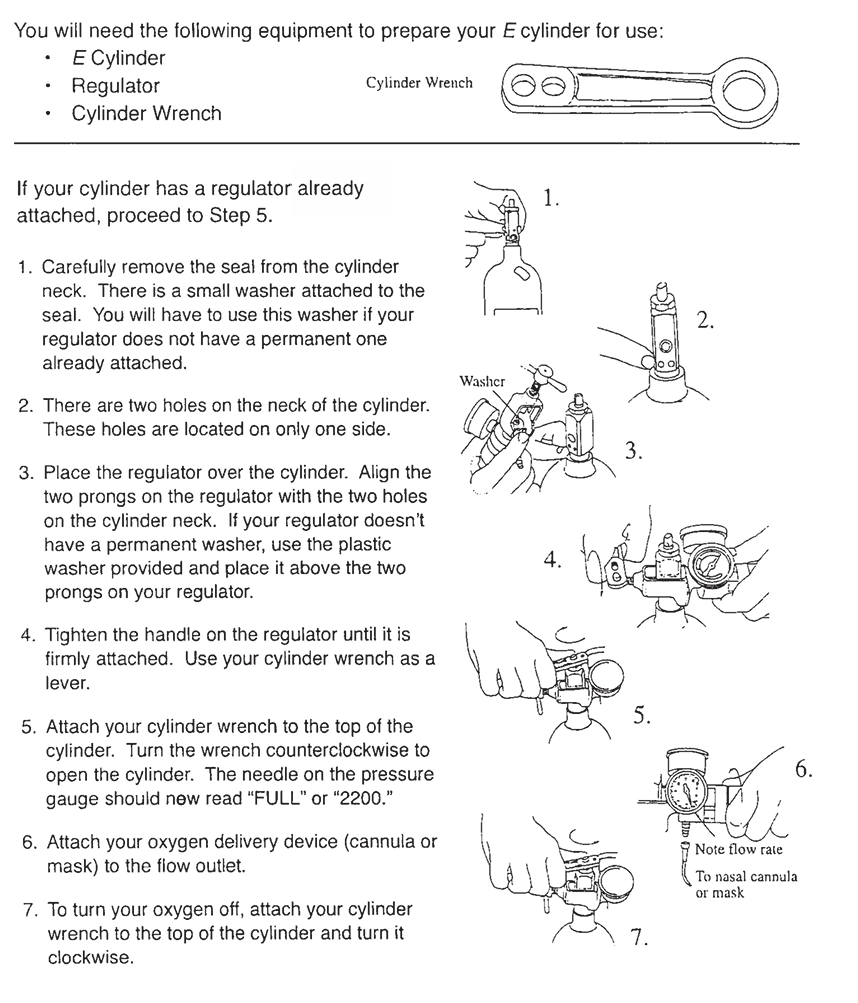Patient Instructions - Oxygen Concentrator
Getting started with your Oxygen Concentrator.
Table of Contents
Traveling With Oxygen?
MedCare Equipment Company requires a two-week notice if our assistance is needed in making arrangements when traveling with oxygen.
Cleaning and Maintenance
- The concentrator cabinet and power cord can be cleaned with a mild household cleaner applied with a damp cloth or sponge and wiped dry.
- WARNING: Disconnect power before cleaning the cabinet).
- Do not use cleaning liquid directly on the concentrator or utilize any petroleum-based solvents or cleaning agents.
- The air intake particle filter should be rinsed weekly.
- Only use water to rinse filter, do not apply cleaning products or detergents.
Mechanical Failure or Power Outage
- MedCare provides each customer with a gaseous portable unit to be utilized in the event of a mechanical failure or power outage.
- In the event of a power outage, mechanical failure, or if the audible alarm sounds, switch to the gaseous oxygen reserve and contact your local branch.
Troubleshooting Your Oxygen Concentrator
Trouble |
Probable Cause |
Remedy |
| Unit not operating (power failure, alarm sound, or continuous alarm) |
|
|
| Limited Oxygen Flow |
|
|
Oxygen Safety and General Information
Oxygen (sometimes called O2) is a colorless, odorless, tasteless gas. Oxygen is essential to life, but it is also a potentially hazardous substance. O2 DOES NOT EXPLODE. O2 DOES NOT BURN by itself. O2 is one of the ingredients necessary for a fire to occur. The others are combustible or flammable materials and a source of ignition. To ensure the safe handling and use of oxygen, the following instructions should be observed:
- Oxygen equipment should be turned off when not in use to prevent accumulation of oxygen in the room.
- Matches, cigarette lighters, burning tobacco, and candles must be eliminated from the room where oxygen is being used and stored.
- Radios, television sets, window air conditioners, fans, electric razors, and all electrical equipment should be at least SIX (6) FEET from the oxygen unit.
- All electrical equipment should be properly grounded.
- Oxygen equipment should not be in a confined area.
- Oxygen equipment should not be oiled or greased.
- Aerosol sprays should not be used around oxygen equipment.
- Heavy coating of oily lotions, face creams, hair dressings, or petroleum jelly should NOT be used while receiving oxygen. A water soluble gel such as K-Y Jelly or Blairex Gel can be substituted in place of petroleum jelly.
- Oxygen units should not be placed near heating units (electric, kerosene, etc.).
- Oxygen cylinders must be secured by a chain, cord, in a stand, or lying flat on the floor in a traffic-free area.
- Liquid oxygen units must remain in the upright position.
-
Do Not touch frosted fittings or piping on a liquid oxygen system.
- Oxygen may be transported in your vehicle when properly secured and with windows open approximately one (1) inch.
- Repair of oxygen equipment should be made by trained personnel only.
- Never alter the oxygen liter flow from what your physician prescribes.
- A gaseous portable oxygen unit is your “back-up” in the event of a power failure. Always maintain a minimum of a four (4) to five (5) hour supply of oxygen for this purpose.
Facts About Your Humidifier
Humidifier Care
- Add only distilled water to your humidifier. Be sure to fill it every day.
- The water in the humidifier should be changed every 24 hours.
- Your humidifier should be cleaned and sanitized a minimum of once each week (more often if your respiratory therapist instructs).
Humidifier Cleaning
- Disassemble the humidifier.
- Wash in warm, sudsy water.
- Rinse all parts under hot water.
- Soak all parts in a vinegar solution (one-part white vinegar to three-parts water) for 60 minutes.
- Remove from the vinegar solution and rinse all parts in hot water.
- Place on paper towels and allow to air dry.
- It is recommended that you have two humidifiers, one in use while the other is being cleaned.
Preparing your E Cylinder

Oxygen Cylinder Approximate Run Time
The below chart details the expected run time (in hours) of each oxygen cylinder size, based on the set continuous liter flow rate.
| Cylinder Size | Total Liters (When Full) | Flow Setting | ||||||||
| 1/2 | 1 | 1 1/2 | 2 | 2 1/2 | 3 | 4 | 5 | 6 | ||
| A6 or M6 | 170 | 5.5 | 2.75 | 1.75 | 1.5 | 1 | .75 | .50 | - | - |
| B or M7 | 198 | 6.5 | 3.25 | 2.25 | 1.75 | 1.25 | 1 | .75 | .50 | - |
| C or M9 | 240 | 8 | 4 | 2.5 | 2 | 1.5 | 1.25 | 1 | .75 | .50 |
| D | 400 | 13.25 | 6.75 | 4.5 | 3.25 | 2.5 | 2.25 | 1.5 | 1.25 | 1 |
| E | 650 | 21.5 | 10.75 | 7 | 5.25 | 4.25 | 3.5 | 2.5 | 2 | 1.75 |
| N or M60 | 1750 | 58 | 29 | 19.25 | 14.5 | 11.5 | 9.75 | 7.25 | 5.75 | 4.75 |
| M or MM | 3450 | 115 | 57.5 | 38.25 | 28.75 | 23 | 19 | 14.25 | 11.5 | 9.5 |
| H | 6900 | 230 | 115 | 76.5 | 57.5 | 46 | 38.25 | 28.5 | 23 | 19 |